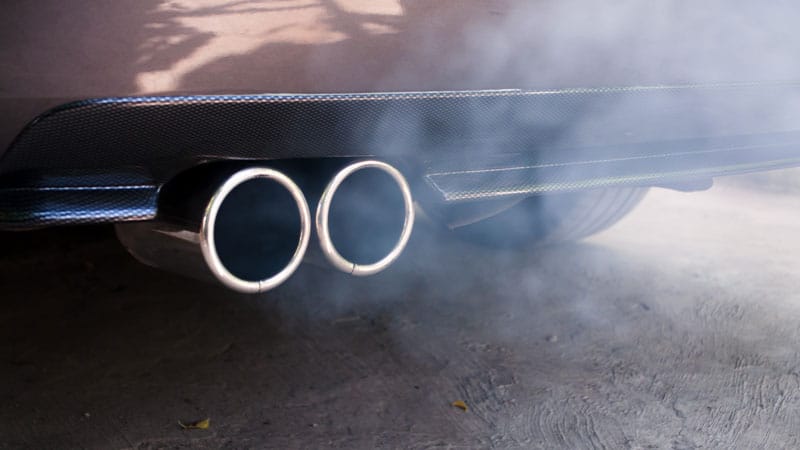Car Running Rich? What Could Be The Problem?
A car running rich is a common issue that many vehicle owners encounter at some point. It refers to a condition where the air-fuel mixture in the engine’s combustion chamber contains more fuel than necessary for optimal combustion. This imbalance can lead to various performance issues, reduced fuel efficiency, and increased emissions. In this article, we will explore the potential causes of a car running rich and discuss possible solutions.

Understanding the Air-Fuel Mixture
To comprehend why a rich-running condition occurs, it’s essential to understand the concept of the air-fuel mixture. An internal combustion engine relies on a precise mixture of air and fuel for combustion to take place. The ideal ratio for this mixture is around 14.7 parts of air to 1 part of fuel, known as the stoichiometric ratio. When the engine receives more fuel than required, it’s considered to be running rich.
Causes of a Rich-Running Condition
- Faulty Oxygen Sensor (O2 Sensor): The oxygen sensor monitors the amount of oxygen in the exhaust gases and sends this information to the engine control unit (ECU). A malfunctioning O2 sensor can inaccurately report the oxygen levels, causing the ECU to supply more fuel than necessary.
- Faulty Mass Airflow Sensor (MAF Sensor): The MAF sensor measures the amount of air entering the engine. If it becomes dirty or malfunctions, it can provide incorrect data to the ECU, leading to an excessively rich fuel mixture.
- Fuel Injector Issues: Clogged or malfunctioning fuel injectors can spray more fuel into the combustion chamber than required. This can be due to debris buildup or internal electrical problems within the injectors.
- Faulty Engine Coolant Temperature (ECT) Sensor: The ECT sensor provides information about the engine’s temperature to the ECU. A malfunctioning sensor can cause the ECU to think the engine is colder than it actually is, resulting in an overly rich mixture.
- Vacuum Leaks: Any vacuum leaks in the intake system can lead to an imbalance in the air-fuel mixture. Unmetered air entering the system can cause the ECU to compensate by increasing fuel delivery.
- Faulty Fuel Pressure Regulator: The fuel pressure regulator controls the amount of fuel that enters the fuel rail. If it malfunctions, it can lead to a constant high fuel pressure, causing the engine to run rich.
Symptoms of a Rich Running Engine
- Decreased Fuel Efficiency: A car running rich, it consumes more fuel than necessary, leading to lower miles per gallon (MPG) figures.
- Black Smoke from Exhaust: Excessive unburned fuel can result in black smoke emanating from the exhaust pipe.
- Strong Odor of Fuel: A rich-running engine can produce a noticeable smell of unburned fuel in the exhaust.
- Poor Performance: The engine might feel sluggish, lack power, or have slow acceleration due to incomplete combustion.
- Catalytic Converter Damage: Over time, a rich mixture can damage the catalytic converter, as unburned fuel can cause it to overheat and deteriorate.
Diagnosis and Solutions
Diagnosing a rich-running condition involves a combination of visual inspection, using diagnostic tools, and sometimes seeking professional assistance. Potential solutions can include:
- Replacing faulty oxygen sensors or other malfunctioning sensors.
- Cleaning or replacing the mass airflow sensor.
- Cleaning or replacing clogged fuel injectors.
- Fixing vacuum leaks by inspecting and replacing damaged hoses or gaskets.
- Addressing issues with the fuel pressure regulator.
- Ensuring the engine coolant temperature sensor is functioning correctly.
If the issue persists after attempting these solutions, seeking help from a qualified mechanic or automotive technician is recommended. They can perform in-depth diagnostics and recommend the best course of action to rectify the problem.
FAQs
Q1: What does it mean when by car running rich?
A1: A car running rich, means that the air-fuel mixture in the engine’s combustion chamber contains more fuel than required for efficient combustion. This can lead to various issues such as decreased fuel efficiency, increased emissions, poor performance, and even potential damage to engine components.
Q2: What causes a car to run rich?
A2: Several factors can cause a car to run rich, including:
- Faulty Oxygen Sensor: A malfunctioning oxygen sensor can provide incorrect feedback to the engine control unit (ECU), causing it to deliver more fuel than necessary.
- Mass Airflow Sensor Issues: A dirty or faulty mass airflow sensor can misreport the amount of air entering the engine, leading to an imbalanced air-fuel mixture.
- Fuel Injector Problems: Clogged or malfunctioning fuel injectors can spray excess fuel into the combustion chamber, causing a rich condition.
- Engine Coolant Temperature Sensor Malfunction: A faulty engine coolant temperature sensor can misinform the ECU about engine temperature, leading to incorrect fuel delivery.
- Vacuum Leaks: Unintended air leaks in the intake system can disrupt the proper air-fuel ratio, causing the engine to run rich.
- Faulty Fuel Pressure Regulator: A malfunctioning fuel pressure regulator can lead to a consistently high fuel pressure, resulting in a rich mixture.
Q3: What are the symptoms of a car running rich?
A3: Some common symptoms of a car running rich include:
- Decreased Fuel Efficiency: Running rich consumes more fuel than necessary, leading to lower miles per gallon (MPG) figures.
- Black Smoke from Exhaust: Excessive fuel in the combustion process can cause black smoke to come out of the exhaust pipe.
- Strong Fuel Odor: A rich-running engine can emit a noticeable smell of unburned fuel from the exhaust.
- Poor Performance: Engine performance can be adversely affected, leading to sluggishness, lack of power, or slow acceleration.
- Catalytic Converter Damage: Over time, a rich mixture can damage the catalytic converter due to excessive heat and unburned fuel.
Q4: How is a rich-running condition diagnosed?
A4: Diagnosing a rich-running condition involves a combination of methods:
- Visual Inspection: Inspect the exhaust pipe for black smoke, and check for any fuel odor.
- Diagnostic Tools: Use an OBD-II scanner to retrieve error codes and data from the vehicle’s computer system.
- Sensor Testing: Test the oxygen sensor, mass airflow sensor, and engine coolant temperature sensor for proper functionality.
- Fuel Injector Inspection: Check the fuel injectors for clogs or malfunctions.
- Vacuum Leak Detection: Inspect the intake system for any visible vacuum leaks.
Q5: How can I fix a rich-running engine?
A5: Depending on the underlying cause, potential solutions may include:
- Replacing Faulty Sensors: Replace malfunctioning oxygen sensors, mass airflow sensors, or engine coolant temperature sensors.
- Cleaning or Replacing Injectors: Clean or replace clogged or malfunctioning fuel injectors.
- Addressing Vacuum Leaks: Repair or replace damaged hoses, gaskets, or components causing vacuum leaks.
- Fixing Fuel Pressure Regulator: Repair or replace a faulty fuel pressure regulator.
- Professional Help: If the issue persists, seek assistance from a qualified mechanic or technician for a thorough diagnosis and repair.
Q6: Can a rich-running condition damage the engine?
A6: Yes, a prolonged rich-running condition can potentially damage the engine. The excess fuel can wash away lubricating oil from the cylinder walls, leading to increased friction and wear. Additionally, unburned fuel can contaminate engine oil and affect the overall efficiency of the combustion process. It can also damage the catalytic converter and exhaust system over time.
Q7: How can I prevent a rich-running condition?
A7: Regular maintenance and attentive care can help prevent a rich-running condition:
- Routine Check-ups: Perform regular maintenance, including sensor checks and replacements as recommended by the manufacturer.
- Fuel Quality: Use high-quality fuel to ensure proper combustion and reduce the likelihood of carbon buildup in the engine.
- Address Issues Promptly: Address any symptoms of a rich-running condition promptly to prevent further damage.
- Professional Inspection: Periodically have your vehicle inspected by a professional to detect and resolve potential issues.
Q8: Can a cold weather affect the air-fuel mixture and cause a rich condition?
A8: Yes, cold weather can potentially affect the air-fuel mixture and cause a rich condition temporarily. During cold starts, engines often require a richer mixture to ensure smooth combustion until the engine warms up. However, modern fuel injection systems are designed to adapt to these conditions and adjust the mixture accordingly. If the engine remains in a rich condition even after warming up, there might be an underlying issue that needs attention.
Q9: Is a lean-running condition the opposite of a rich-running condition?
A9: Yes, a lean-running condition is the opposite of a rich-running condition. In a lean condition, the air-fuel mixture contains more air and less fuel than the ideal stoichiometric ratio. This can lead to symptoms like poor performance, increased engine temperature, and higher emissions. Just like a rich condition, a lean condition can also be caused by various factors such as faulty sensors, vacuum leaks, or fuel delivery issues.
Q10: Can a rich-running condition affect emissions and the environment?
A10: Yes, a rich-running condition can result in increased emissions of hydrocarbons (unburned fuel) and carbon monoxide. These emissions contribute to air pollution and can harm the environment. Additionally, vehicles that run rich tend to have lower fuel efficiency, which means they consume more fuel and produce more greenhouse gas emissions for the same distance traveled. Therefore, addressing a rich-running condition is important not only for vehicle performance but also for reducing environmental impact.
Conclusion
A car running rich can lead to a host of performance problems, decreased fuel efficiency, and increased emissions. Understanding the potential causes of this issue, along with the symptoms it produces, can help car owners take the necessary steps to diagnose and rectify the problem. Regular maintenance, timely sensor replacements, and addressing issues promptly can go a long way in maintaining a healthy air-fuel mixture and ensuring optimal engine performance.

